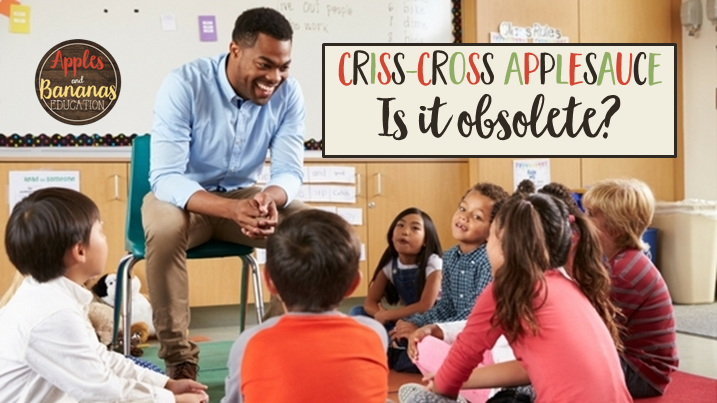
The seemingly innocuous phrase “criss-cross applesauce” has become a lightning rod for controversy in recent years. This common instruction, often used by teachers and caregivers to guide young children into a seated position, has sparked debate about its potential negative impacts on child development and classroom dynamics. While some view it as a harmless way to maintain order, others argue that it promotes obedience over autonomy and can be detrimental to a child’s sense of self-worth. This article delves into the origins, controversy, and implications of using “criss-cross applesauce” in educational settings.
This article will explore the definition of “criss-cross applesauce,” examine the arguments surrounding its use, analyze its potential impact on child development, and propose alternative classroom management techniques that prioritize respect and autonomy.
Criss-Cross Applesauce Definition
“Criss-cross applesauce” is a phrase used to instruct children to sit with their legs crossed in an “X” shape and their feet tucked under them, resembling the arrangement of apples in a bowl. This position is often employed by teachers and caregivers to create a structured and orderly environment in classrooms or during group activities.
The phrase itself evokes a sense of playfulness and simplicity, making it seemingly appealing for young children. However, beneath this surface-level charm lies a deeper debate about the implications of using such language to control behavior.
Controversy Surrounding the Phrase

The controversy surrounding “criss-cross applesauce” stems from its perceived association with controlling and potentially harmful behavior in children. Critics argue that the instruction can be seen as demeaning and infantilizing, reducing children to passive objects rather than active participants in their learning.
Furthermore, the phrase often carries an implicit expectation of immediate compliance, which can undermine a child’s sense of agency and autonomy. This emphasis on obedience over critical thinking and self-expression raises concerns about the long-term impact on a child’s development.
Arguments Against “Criss-Cross Applesauce”
Several compelling arguments have been raised against the use of “criss-cross applesauce” in educational settings:
- Infantilization: Critics argue that the phrase treats children as incapable of making their own decisions about how to sit, undermining their sense of self-reliance and agency.
Promotion of Obedience: The instruction often carries an implicit expectation of immediate compliance, which can discourage critical thinking and independent decision-making.
Lack of Individuality: The standardized nature of the position can stifle creativity and individuality, as children are expected to conform to a specific mold rather than expressing themselves freely.
- Potential for Discomfort: For some children, the “criss-cross applesauce” position may be physically uncomfortable or even painful, leading to discomfort and distraction during learning activities.
Impact on Child Development

The potential impact of using “criss-cross applesauce” on child development is a subject of ongoing debate. While proponents argue that it promotes order and focus, critics contend that it can have detrimental effects on a child’s emotional, social, and cognitive development:
- Emotional Well-being: Constant pressure to conform to rigid instructions can lead to feelings of frustration, anxiety, and resentment in children who are naturally more independent or expressive.
Social Skills: The emphasis on obedience over collaboration can hinder the development of social skills such as negotiation, compromise, and empathy.
Cognitive Development: A classroom environment that prioritizes compliance over critical thinking may stifle a child’s natural curiosity and ability to explore ideas independently.
Alternative Classroom Management Techniques
Fortunately, there are numerous alternative classroom management techniques that prioritize respect, autonomy, and positive reinforcement:
- Clear Expectations and Boundaries: Establish clear expectations for behavior and create a supportive environment where children feel safe to express themselves.
- Positive Reinforcement: Focus on rewarding desired behaviors rather than punishing undesirable ones.
Collaborative Problem-Solving: Involve children in setting classroom rules and resolving conflicts, fostering a sense of ownership and responsibility.
Choice and Flexibility: Offer children choices whenever possible, allowing them to have some control over their learning environment.
Conclusion
The use of “why is criss-cross applesauce offensive” or “why is criss cross applesauce offensive” in classrooms has sparked a crucial conversation about the impact of language on child development and classroom dynamics. While proponents argue for its simplicity and effectiveness, critics raise valid concerns about its potential to undermine autonomy, creativity, and emotional well-being. By exploring alternative classroom management techniques that prioritize respect, collaboration, and positive reinforcement, educators can create learning environments that nurture both academic growth and personal development.
